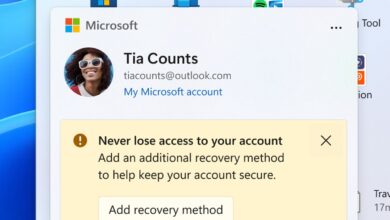Why media companies are still hybrid, four years since the pandemic started

By Sara Guaglione • March 22, 2024 • 4 min read •

Ivy Liu
It’s been four years since the pandemic caused media companies to make the overnight switch to a work-from-home model. Though many companies have brought employees back into the office since then, most large digital publishers are still choosing a hybrid model over a full-time model, with staff working only a few days a week in the office.
And there seem to be no plans to change that system for the foreseeable future, at least among six companies including Bustle Digital Group, Condé Nast, Forbes, Hearst, The New York Times and The Wall Street Journal. The New York Times and The Wall Street Journal require most of their staff to come into the office three days a week, while the other companies allow teams to determine their own in-person work requirements.
Why haven’t digital publishers gone back to working fully in person? The answer seems to be that employees are happy with the flexibility they’ve been given with hybrid work, and employers are willing to continue to offer that to them.
“Forbes continues to offer employees flexibility on work location where it meets the needs of our roles and the business. This model has been working for Forbes for several years now, and we’ve received positive feedback from our employees,” said a Forbes spokesperson.
A “vast majority” of The New York Times’ workforce is also hybrid, according to a company spokesperson. They did not specify if certain roles were required to come in full-time. “We believe that allowing people the flexibility to work together in the office at times and remotely at other times benefits everyone by ensuring that we maintain the strong, collaborative environment that has come to define our culture and drive our success,” they said.
The Wall Street Journal’s reporters are required to work either in their office or in the field three days per week, a system that’s been in place since November 2022, said Tim Martell, executive director of Dow Jones’ union IAPE. Senior editors and managers, however, have been encouraged to work in-office on a full-time basis, he added.
“We are still negotiating a contract with Dow Jones and our current proposal regarding in-office work would cap mandatory office days at three per week. Until recently, management had been proposing an end to days-per-week limits effective March 31. The company withdrew that proposal last month,” said Martell. The Wall Street Journal declined to comment.
Union pushback to return to office mandates also have contributed to continued hybrid working models. Newsroom unions argue that return to office arrangements are mandatory subjects of bargaining, or topics that must be negotiated between unions and management as a legal requirement, and have pushed employers to walk back mandated returns to in-office work.
A Reuters Institute report released in December found that about two-thirds (65%) of senior newsroom leaders surveyed said their employers had implemented flexible and hybrid working models – up slightly from 61% in the same “Changing Newsrooms” report conducted in 2022. Only 16% had returned to the pre-pandemic model, which is defined as the majority of employees’ time being spent in-person in the office, down from 20% in 2022.
Thirty-percent of respondents said staff are required to be in the office some number of fixed days per week and their company is enforcing the rule (down from 49% in 2022). But 22% said that no one is checking if they really are going into the office as often as they are required to. (The report surveyed 135 senior industry leaders from 40 countries.)
Hybrid work has “been a dramatic improvement” to work-life balance for Hearst Union members, said Zach Lennon-Simon, senior video editor at Delish and Hearst Union member. He added that, despite the fact that employees are encouraged to come into the office a few days a week, he had not heard of any members getting penalized for not doing so.
One common issue with hybrid working models is that employees come into the office when they want – and find that no one else from their team is there, so they end up participating in virtual meetings anyway.
BDG is testing a different approach this year to mitigate that problem. The company has adopted a “core week model,” where the company has identified about 25 weeks of the year (around key events or busy coverage periods) that employees are encouraged to come into the New York office from Tuesday through Thursday, according to a spokesperson.
“Giving employees flexibility is what [they’re] looking for,” said Paul Wolfe, a former HR exec and author of “Human Beings First.” “It’s also something free that a company can give to their employees, that doesn’t really cost them anything if they do it in the right way [that can] keep them happy and engaged when they’re given a choice about how and when they do their work.”
https://digiday.com/?p=538955
More in Media

From GTC and GDC to Shoptalk: Major industry events put AI on center stage
March 21, 2024 • 7 min read
From microchips to gaming to e-commerce, three previously disparate worlds all share a similar thread this week.

Media Briefing: What to expect at the Digiday Publishing Summit, March 2024 edition
March 21, 2024 • 10 min read
Execs from Axios, Hearst, Semafor and Time, among other media companies, are heading to DPS to talk shop next week.

Disney is rolling out DRAX Direct, a direct integration with the industry’s largest DSPs
March 20, 2024 • 4 min read
Google’s DV 360 and The Trade Desk are DRAX Direct’s launch partners, a development the entertainment giant is characterizing as a “landmark agreement.”


